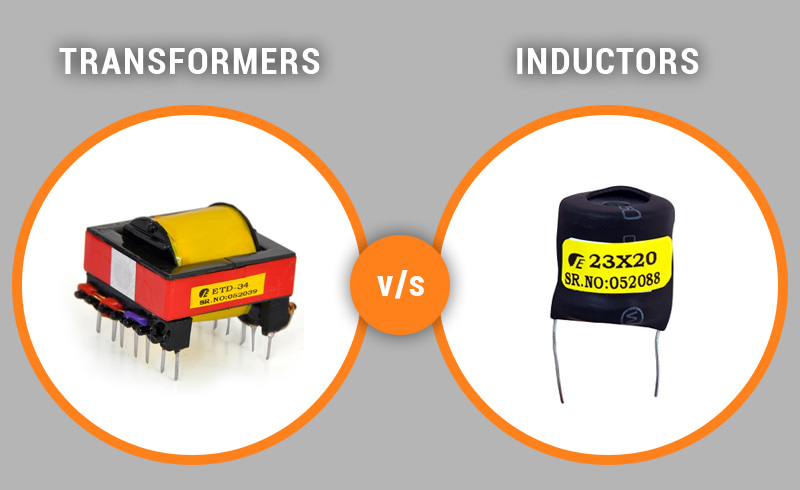No Product Added

By : Shah Electronics

Transformers and inductors are two of the most commonly used passive components in electronic circuits. Both of these components are used to store and transfer energy in different ways. Although transformers and inductors are similar in some aspects, they have some significant differences that set them apart. In this blog post, we'll explore the differences between transformers and inductors and provide a brief overview of their applications.
An inductor is a passive electronic component that stores energy in a magnetic field when current flows through it. An inductor is made up of a coil of wire wound around a core made of a magnetic material such as iron. The inductor's core material is used to enhance the inductance of the coil by concentrating the magnetic field within the core
Inductors are used in a variety of applications such as filters, oscillators, and power supplies. In power supplies, inductors are used as energy storage elements in DC-DC converters to maintain a stable output voltage. Inductors can also be used as part of a filter to block high-frequency signals while allowing low-frequency signals to pass through.
A transformer is also a passive electronic component that consists of two or more coils of wire wound around a core. Transformers are used to transfer energy from one circuit to another circuit without any physical contact between the two circuits. The transformer's primary coil is connected to a power source, and the secondary coil is connected to the load.
Transformers are used in a wide range of applications, including power supplies, audio amplifiers, and electric motors. In power supplies, transformers are used to step up or step down the input voltage to the required output voltage level. In audio amplifiers, transformers are used to isolate the audio signal from the amplifier circuit to prevent noise and interference.
The primary difference between transformers and inductors is that transformers are used to transfer energy from one circuit to another circuit, while inductors are used to store energy in a magnetic field. Transformers are also capable of stepping up or stepping down the input voltage, while inductors do not have this capability.
Another significant difference between transformers and inductors is their construction. Inductors have a single coil of wire wound around a core, while transformers have two or more coils of wire wound around a common core. The transformer's primary and secondary coils are wound around the same core, while inductors have a single coil wound around a core.
The voltage regulation of transformers and inductors is also different. Transformers have a high voltage regulation, which means that the output voltage varies significantly with changes in the input voltage. In contrast, inductors have a low voltage regulation, which means that the output voltage does not vary significantly with changes in the input voltage.
In conclusion, transformers and inductors are both passive electronic components that are used to store and transfer energy. Although both of these components are similar in some aspects, they have some significant differences that set them apart. Transformers are used to transfer energy from one circuit to another circuit, while inductors are used to store energy in a magnetic field. Transformers are also capable of stepping up or stepping down the input voltage, while inductors do not have this capability. Understanding the differences between transformers and inductors is important for designing and building electronic circuits.
© 2025. Shah Electronics. All Rights Reserved. Terms of Use Privacy Policy Cookie Policy
Terms of Use
Privacy Policy
Cookie Policy
© 2025. Shah Electronics. All Rights Reserved.
Powered by WEBMANTRA